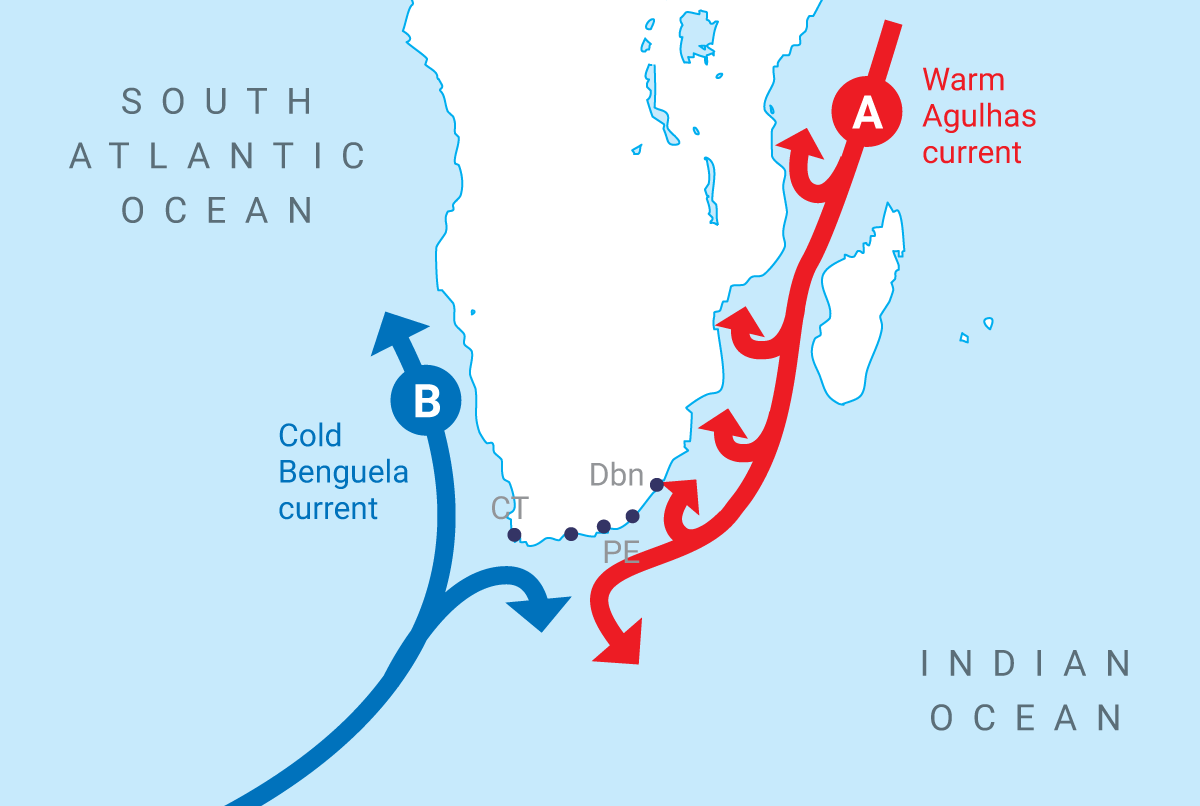
The influence of the Indian and Atlantic Oceans, primarily through the Benguela and Agulhas Currents, plays a pivotal role in sculpting the climate and conditions for winemaking in South Africa. Among these currents, the Benguela Current, a cold oceanic flow originating from the Antarctic region and moving northward along the western coast of Southern Africa, exerts a profound impact on the South African wine regions. Its significance can be seen in the following ways:
- Temperature Moderation: Preserving Flavor Precision
The Benguela Current’s frigid waters introduce a notable cooling effect along the coastal regions of South Africa. This vital temperature moderation helps to avert the extremes of heat during the vineyard’s growth cycle. It is pivotal in ensuring the even ripening of grapes, safeguarding acidity levels, and nurturing the development of intricate and harmonious flavors.
- Microclimates: Crafting Wine with Precision
The confluence of the Indian and Atlantic Oceans, steered by the Benguela Current, begets a mosaic of microclimates throughout the Western Cape. The proximity to the oceans and their temperature-regulating prowess allows for the strategic placement of vineyards at varying distances from the coast. Each of these locales bears a distinct climate, empowering winemakers to select specific sites ideally suited for particular grape varieties. This precision contributes to the crafting of wines with remarkable finesse.
- Temperature Diurnal Range: Enhancing Grape Quality
The diurnal temperature range, signifying the variance between daytime and nocturnal temperatures, is a boon for grape cultivation. The oceanic influence of the Benguela Current bestows daytime temperature moderation, while the clear skies and absence of oceanic effects at night facilitate temperature declines. This temperature duality safeguards grape acidity and facilitates the progressive development of flavors, bestowing wines with exceptional quality.
- Fog and Mist: Alleviating Water Stress
Regions along the coast that bear the imprints of the oceans often encounter morning fog and mist. These atmospheric conditions, especially conducive for white grape varieties such as Sauvignon Blanc and Chardonnay, significantly enhance the vineyard environment. The ocean-derived moisture alleviates water stress on the vines, resulting in grapes of remarkable character and quality.
- Rainfall and Drought Mitigation: Sustaining Vineyards
Coastal areas, particularly those influenced by the Atlantic Ocean, experience more dependable rainfall during the winter months. This dependable water supply safeguards vineyards, ensuring access to sufficient water reserves. Consequently, it plays a pivotal role in mitigating the impact of drought, a persistent concern in South Africa.
- Unique Terroir: A Sense of Place
These multifaceted factors, in synergy with the distinctive soils and altitudes of South African wine regions, contribute to the cultivation of a unique terroir. This intricate tapestry of natural influences empowers winemakers to craft wines infused with distinctive characteristics that genuinely reflect the essence of their origin.
- Cool-Climate Varieties: Elegance and Complexity
The cooling influence of the oceans serves as an ideal canvas for the cultivation of cool-climate grape varieties such as Pinot Noir, Chardonnay, and Sauvignon Blanc. This environment fosters a prolonged growing season and a gradual ripening process. The result is wines characterized by elegance, complexity, and a delightful expression of their unique terroir.
One Comment
Comments are closed.




Super insightful! Thanks for the intel.